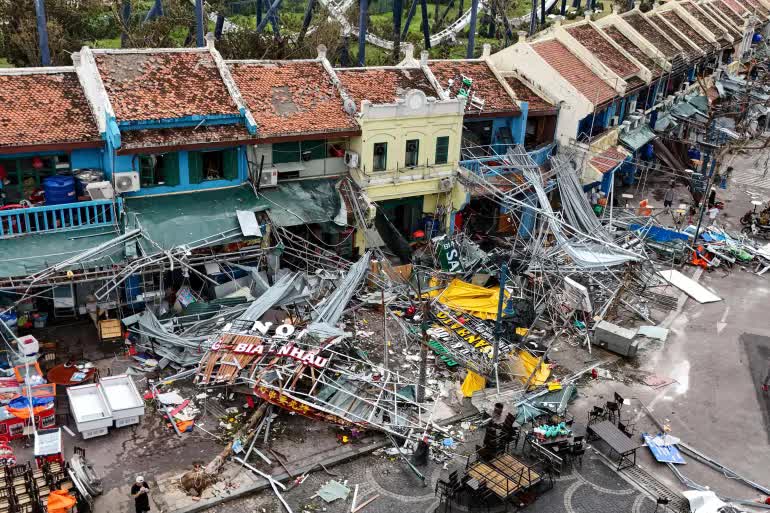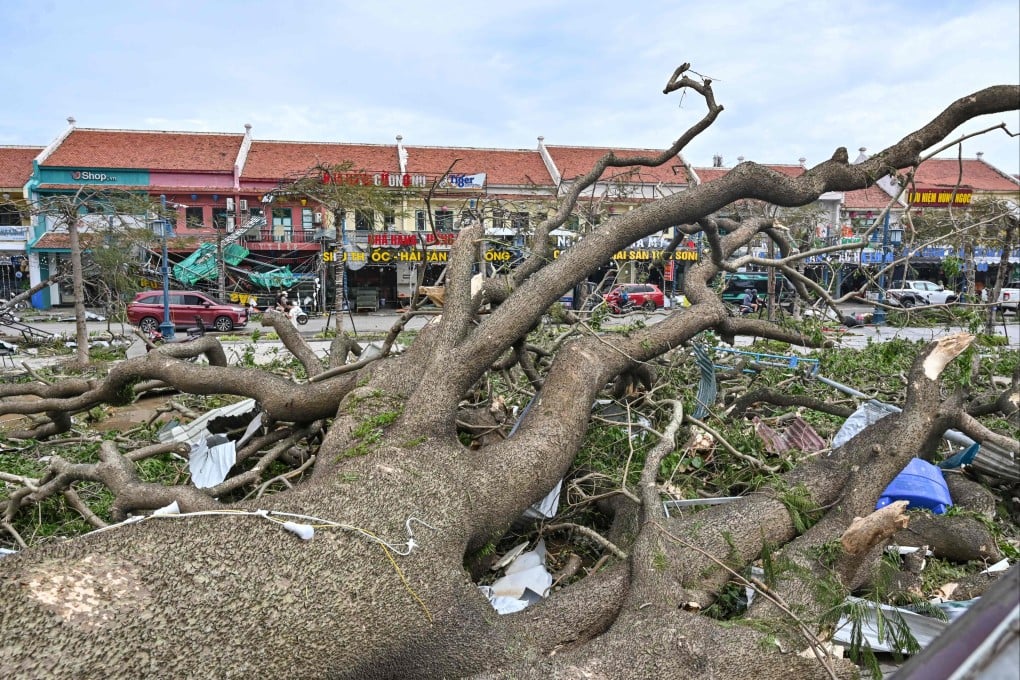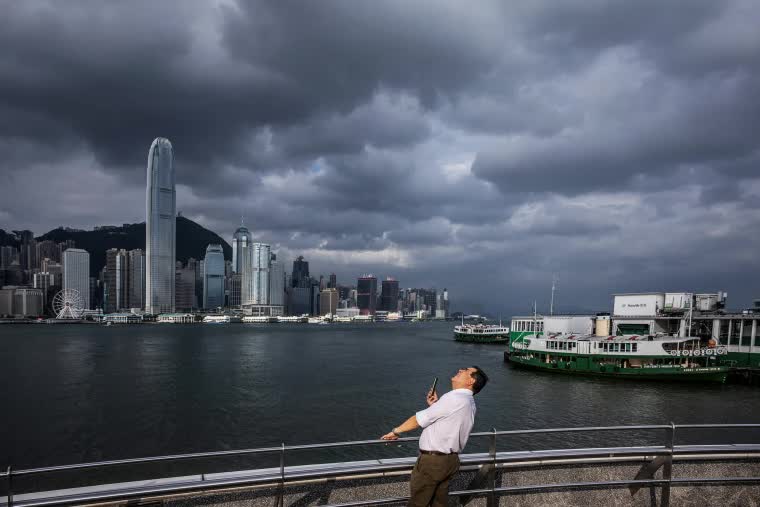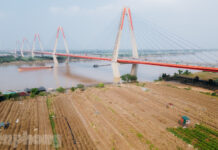Deadly Storms in Southeast Asia: A Growing Threat
A recent study published in July 2024 by researchers from the University of Pennsylvania and Rowan University in the US, and Nanyang Technological University (NTU) in Singapore, reveals a disturbing trend. Tropical cyclones in Southeast Asia are forming closer to the coast, intensifying faster, and lingering longer over land. These changes, driven by climate change, pose a significant risk to the tens of millions of people living in coastal areas. Cities like Haiphong in Vietnam, Yangon in Myanmar, and Bangkok in Thailand are now facing unprecedented threats from these longer-lasting and more intense storms.

Superstorm Yagi wreaks havoc in Vietnam
Tropical cyclones, or typhoons, are powerful rotating storms that form over warm ocean waters and bring strong winds and heavy rainfall. Typically forming in the tropics near the equator, where warm ocean waters and stable temperatures provide the ideal conditions for their development and intensification.
By analyzing over 64,000 historical and future storm simulations from the 19th to the 21st centuries, the study, published in the journal Nature Climate and Atmospheric Science, highlights significant changes in the behavior of tropical cyclones in Southeast Asia. These include an increased tendency to form closer to the coast and move more slowly over land, posing new risks to the region.
The Human Impact on Storms
The research team explains that tropical cyclones worldwide are influenced by warming ocean waters. As oceans absorb more heat, storms can draw more energy from them, intensifying their impact. This warming is, in large part, a consequence of human-induced climate change.
Lead author, Associate Professor Andra Garner, from Rowan University’s Department of Earth and Environment, says, Southeast Asia has a densely populated coastline, currently home to over 70% of the global population projected to be affected by future sea-level rise. When you look at that densely populated coastline and the fact that it is a region that is impacted by tropical cyclones, there is a real risk, especially as those cyclones become more destructive and the population continues to grow.”
Co-author Professor Benjamin Horton, Director of the Earth Observatory of Singapore at NTU, adds, Tropical cyclones have brought devastating rainfall and flooding to Southeast Asia, prompting mass evacuations, destroying infrastructure, and impacting the lives and livelihoods of thousands. Our study shows that as these storms move across warmer oceans due to climate change, they will carry more moisture and heat. This means stronger winds, heavier rainfall, and more flooding when they make landfall.”

Storms in Southeast Asia are expected to intensify due to climate change
Unlike traditional studies that focus solely on historical weather and storm patterns, the researchers designed computer simulations to account for multiple variables, such as projections of human-induced emissions increases and their impact on planetary warming.
These simulations revealed insights into the changes in the formation, intensification, slowdown, and eventual dissipation of cyclones, offering valuable information about the impact of a warming climate on these storms.
Co-author Dr. Dhrubajyoti Samanta, Senior Research Fellow at the Earth Observatory of Singapore at NTU, shares, By examining storms over such a long time period, our study provides insights that can help governments prepare for future cyclones and guide community development planning. By leveraging nine global climate models, this study significantly reduces the uncertainty in predicting tropical cyclone changes, which has been a challenge in previous studies that used only a single model.”

Typhoon Yagi makes landfall in Southern China
Associate Professor Garner further emphasizes, There are two key takeaways: First, we should act to reduce emissions so we can limit the impact of future storms. Second, we should act now to protect those coastlines for the future, which will likely see some of the worst impacts of tropical cyclones regardless of future emissions scenarios.”
The research team will continue their investigations to gain a deeper understanding of extreme weather conditions in the region and identify further ways to mitigate their impact on vulnerable populations.
Source: Science Daily
Conserving and Restoring Water Resources in the Mekong Delta: An Urgent Priority
“The Mekong Delta is being reshaped at an alarming rate, with new and adverse features that differ from its natural historical state. As such, the conservation and restoration of water resources to ensure the sustainable development of the Mekong Delta is of utmost urgency.”








































